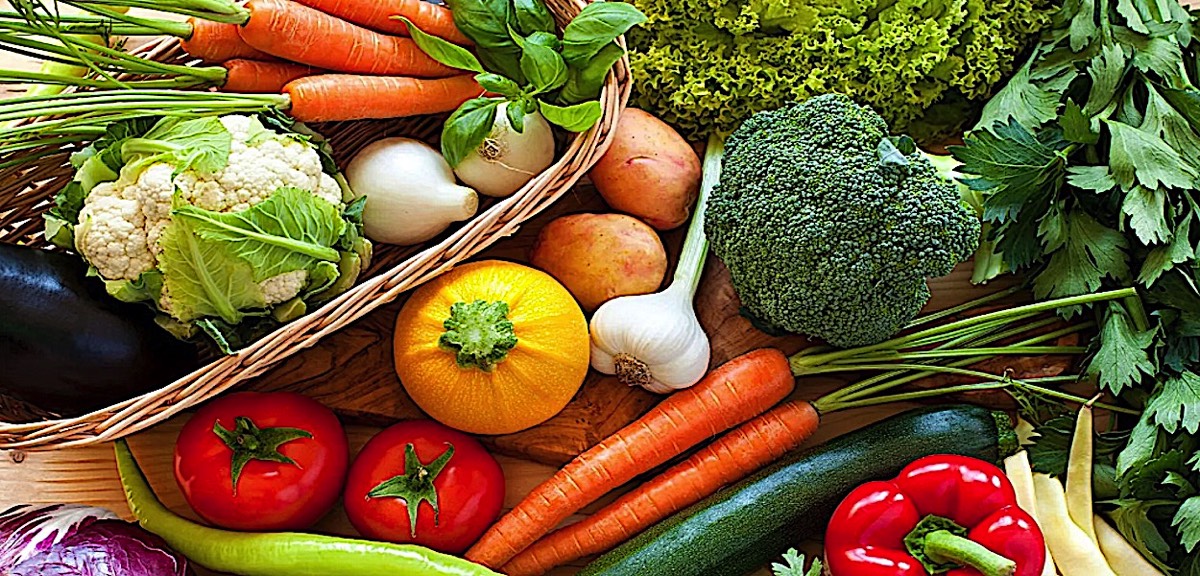


Health Benefits of Vegetables
What are Vegetables?
Types of Vegetables
1. Root Vegetables – plants which are sources of edible roots, mainly modified underground roots, e.g., beets and sweet potato. These modified roots are either tuberous roots or fleshy roots.
2. Stem Vegetables – plants which are sources of edible botanical stems which are usually immature and succulent. They can be divided further into those plants in which the edible plant structure consists mainly of aerial stems, e.g., bamboo shoot and those with underground modified stems such as corms, tubers, bulbs, rhizomes, and stolons.
3. Leafy Vegetables – plants which are sources of edible leaves in various stages of development. The leaves may be separate and fully expanded or, as in cabbage, form a head. It includes, in some species, succulent stems, e.g., sweet potato (camote tops).
4. Flower Vegetables – plants which are sources of edible flowers or inflorescences including, in some species, accessory parts like the stalk (pedicel or peduncle). In cauliflower, it consists of the stalk and an immature inflorescence. But in squash, it is the mature flower.
5. Fruit Vegetables – plants which are sources of edible botanical fruits, either simple or compound, e.g., tomato and corn (maize).
6. Seed Vegetables – plants which are sources of edible botanical seeds, mostly under the family Leguminosae or Fabaceae (legumes), e.g., mung bean and pigeon pea.
Health Benefits of Vegetables
Eating vegetables provides health benefits — people who eat more vegetables and fruits as part of an overall healthy diet are likely to have a reduced risk of some chronic diseases. Vegetables provide nutrients vital for health and maintenance of your body.
Nutrients
- • Vegetables are important sources of many nutrients, including potassium, dietary fiber, folate (folic acid), vitamin A, and vitamin C.
- • Diets rich in potassium may help to maintain healthy blood pressure. Vegetable sources of potassium include sweet potatoes, white potatoes, white beans, tomato products (paste, sauce, and juice), beet greens, soybeans, lima beans, spinach, lentils, and kidney beans.
- • Dietary fiber from vegetables, as part of an overall healthy diet, helps reduce blood cholesterol levels and may lower risk of heart disease. Fiber is important for proper bowel function. It helps reduce constipation and diverticulosis. Fiber-containing foods such as vegetables help provide a feeling of fullness with fewer calories.
- • Folate (folic acid) helps the body form red blood cells. Women of childbearing age who may become pregnant should consume adequate folate from foods, and in addition 400 mcg of synthetic folic acid from fortified foods or supplements. This reduces the risk of neural tube defects, spina bifida, and anencephaly during fetal development.
- • Vitamin A keeps eyes and skin healthy and helps to protect against infections.
- • Vitamin C helps heal cuts and wounds and keeps teeth and gums healthy. Vitamin C aids in iron absorption.
- • As part of an overall healthy diet, eating foods such as vegetables that are lower in calories per cup instead of some other higher-calorie food may be useful in helping to lower calorie intake.
- • Eating a diet rich in vegetables and fruits as part of an overall healthy diet may reduce risk for heart disease, including heart attack and stroke.
- • Eating a diet rich in some vegetables and fruits as part of an overall healthy diet may protect against certain types of cancers.
- • Adding vegetables can help increase intake of fiber and potassium, which are important nutrients that many Americans do not get enough of in their diet.
Your mother always said, “eat your vegetables” and she was right – maybe in more ways than she knew. While you don’t have to go all veggie and become a strict vegetarian, one of the healthiest eating habits you can foster in your family is to eat more vegetables.
1. Vegetables are a perfect complement. Vegetables are low in fat and protein thus they are a perfect complement to animal protein foods. Make vegetables the centerpiece of your meals and let the other food groups accompany them. For many families, this may be a switch of mindset from meat and potatoes to potatoes and meat. The animal food is more of a garnish, adding flavor and nutrition to the medley of vegetables and grains. Stir-fry is a good example. (Even better would be a combination of fish and vegetables). If you aren’t ready to relegate steak and meatloaf to second place, at least make vegetables equal stars in the meal. With interesting and tasty vegetable dishes on the table (and a variety of starches), your family will gradually begin eating less meat.
2. Vegetables are nutrient-dense. Vegetables pack a lot of nutrition into a minimum of calories. For a measly 35 calories, you can get a half cup of vegetables that contains a wide variety of vitamins, minerals, and health-building substances, called phytonutrients – not to mention a lot of flavor. Load up on legumes (the family of beans, peas, and lentils). Second, only to soy, legumes are the best plant source of proteins, fiber, and iron, in addition to being high in folate.
LOVE THOSE SWEET POTATOES
A good source of protein, fiber, beta carotene, vitamin C, folate and calcium, sweet potatoes are a nutritious and tasty family food and merit a place in our “Top Twelve Foods” list. Contrary to their name, sweet potatoes are not botanically a potato, but rather a root. Though white potatoes contain much more niacin, sweet potatoes are overall more nutritious: They are lower in carbs and higher in fiber, beta carotene, folic acid, and calcium. Like potatoes, sweet potatoes are best stored in a cool, dry pantry. If refrigerated, they lose their taste.
3. Veggies are a dieter’s best partner. Vegetables get top billing on any diet because most are “free foods,” meaning you can eat an unlimited amount. Why this lean indulgence? Because of a neat little biochemical quirk that only veggies enjoy: the body uses almost as many calories to digest vegetables as there are in vegetables in the first place. You’ll use up most of the 26 calories in a tomato just chewing, swallowing, and digesting it.
4. You can fill up for less. Because of the fiber in vegetables, you get fuller faster; which is another reason why it’s nearly impossible to overeat veggies.
5. Variety, variety, variety. Let’s face it, diversity makes life interesting. Adults, at least, like different foods prepared different ways. Witness the diversity of ethnic restaurants in any large city. There are hundreds of different kinds of vegetables and even more ways to prepare them.
6. Vegetables provide complex carbohydrates. The energy in vegetables is in the form of complex carbohydrates. These take some time to digest and don’t cause the blood sugar highs and lows that sugars do. An exception to this rule is the sugar in beets or corn. (These sugars have a high glycemic index and trigger the insulin cycle.)
7. Vegetables contain cancer-fighting phytos. On paper, a nutrient analysis of vegetables may not look all that special. Sure, there are lots of nutrients in vegetables, but most of these can also be found in other foods, such as fruits and grains. What you don’t see in the nutrition charts or on the package labels are the hundreds of valuable nutrients, called phytochemicals, found in plants that have as-yet untold health-promoting properties. New research, especially in the field of cancer, is showing that vegetables are nature’s best health foods.
Information about Superfoods

Contact Us & follow us for Vitality & Healthy Life Information






